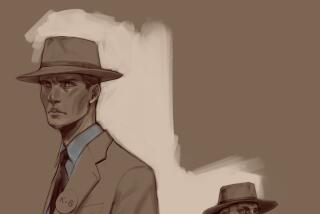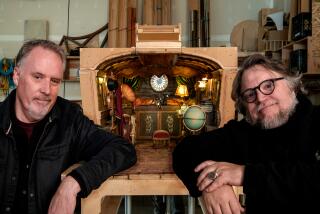Strong color pallette brings a long-held vision of ‘Shape of Water’ to life
If you are a set designer working on a period fantasy by director Guillermo del Toro, you know you’ll be diving into a pool of visual references. That’s precisely what Paul Austerberry did to prepare for “The Shape of Water,” the acclaimed movie about the love affair between a mute cleaning woman and a mysterious amphibious man. Del Toro had been planning the movie in his head for almost seven years, so he had many notions about what the film would ultimately look like. “It’s always better when the director brings lots of references to the table,” says Austerberry. “Guillermo had many ideas, so we had to refine them in a short amount of time.”
Del Toro has mentioned before that he was thinking about “The Creature from the Black Lagoon” when he started thinking about doing a romantic monster movie. What were some of the other ways his love for cinema found its way into your designs?
One of the first things Guillermo wanted to reference was the beautiful arch window that we see in Elisa’s (Sally Hawkins) apartment, which is a reference to one of his favorite movies, the 1949 classic “The Red Shoes.” Both Elisa and her friend Giles (Richard Jenkins) live above this grand movie palace — which is, in fact, Toronto’s Massey Hall.
FULL COVERAGE: 2018 Oscar nominations »
The idea was that at some point, this grand area above the theater was split into two rooms, but each room reflects the person who lives in it: Giles’ side is decorated in an old-fashioned way, with wallpaper from the ’20s, while Elisa’s room is also a relic from a romantic past — but it has suffered from fire and water damage. The floorboards have gaps in them so that the caustic light from the movie theater below shines through in the dream sequence. Her environment is very aqua colored, while Giles is all about warm golds, mustards and browns.
How specific were you about the colors and backgrounds selected for each of the main characters?
In the early stages of the production, the movie was supposed to be in black and white. I found that to be both exciting and terrifying, because color is a huge visual aid to tell a story. But when they decided to do the movie in color and raised our budget significantly, I was quite relieved. On the first day that our production office opened, I brought in this huge Benjamin Moore box with 3,500 color chips in it. Guillermo and I went through them all and tagged about 100 colors, so we had this rough idea of what the color palettes for each character would be. He did the same thing for the film’s costumes.
For Elisa’s apartment, Guillermo sent me a picture of a cyan-colored rough wall from a photographer in India. He liked the worn, stained quality of it. I thought of using Hokusai’s famous “The Great Wave off Kanagawa” wood carving, because it’s one of the most famous literal shapes of water. Our scenic artist painted a 3D plaster version of it on the wall, with the waves crashing over the entrance door. Then, we added layers of aging, and different stains and washes to it, so it faded back into the wall. You have to look for it to find it.
The austere late ‘50s, early ‘60s-era government lab, where the creature is held captive, is also quite memorable. How did you come up with the details for that?
Guillermo had some ideas about what the tank looked like, but we didn’t have any thoughts about the lab environment. I studied architecture at Carleton University in Ottawa, which has these Brutalist-style buildings. I thought a similar type of structure would be perfect for the lab.
In the script, the creature is described as a godlike creature from the Amazon. I envisioned him emerging from the pool as a figure on top of a ziggurat temple. So, we used this stylized sun figure made from a part of a round tank and these radial pipes positioned around it as the sun rays. We wanted him to look as if he were emerging in front of the sun figure on this temple.
The scene in which Elisa’s apartment is submerged with water must have been quite a challenge. Tell us about preparing for that scene.
Besides finding the right space to shoot the Cadillac dealership in the movie in Toronto (we ended up converting an old department store), the most stressful part was shooting the bathroom sequence. I had heard horror stories about how small details can contaminate the water and make everything cloudy very quickly. At that point, we had extended our schedule by five extra days, and Sally [Hawkins] was going to fly out of town at the end of that day.
I was terrified that something I did with the paint or the material would cloud up the water. We built that whole portion of the bathroom set out of aluminum and painted it, so that it could be submerged in a tank of water for a whole day of shooting. We tested the paint for weeks. It was a very tight space: We shot on this existing set from Guillermo’s TV series “The Strain,” and we stripped off all the walls. Luckily, everything went as planned. The water didn’t cloud up.

WATCH: Video Q&A’s from this season’s hottest contenders »
More to Read
From the Oscars to the Emmys.
Get the Envelope newsletter for exclusive awards season coverage, behind-the-scenes stories from the Envelope podcast and columnist Glenn Whipp’s must-read analysis.
You may occasionally receive promotional content from the Los Angeles Times.






